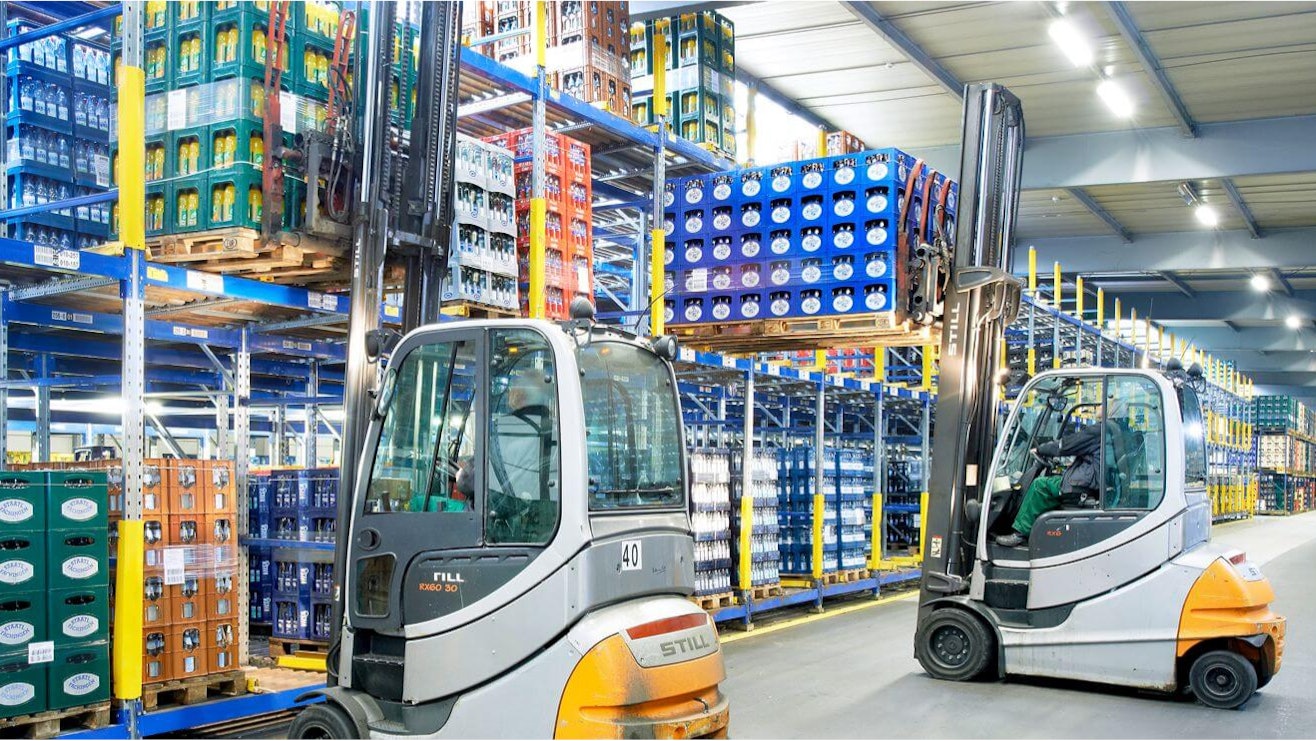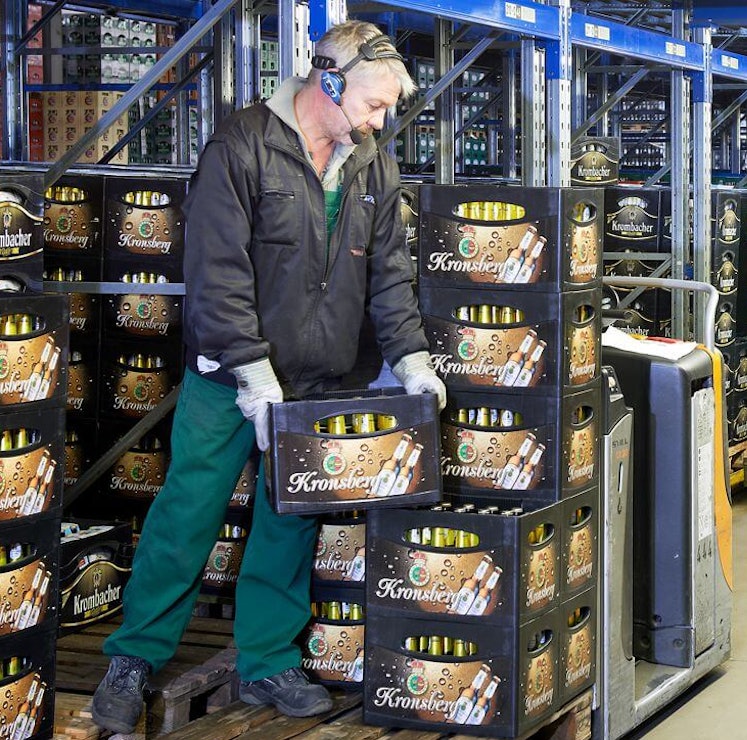Facts & Challenges

The beverage industry comprises a wide variety of beverage manufacturers of soft drinks and spirits, breweries, beverage bottlers, wholesalers, retailers, online retailers, logistics companies, suppliers of beverage packaging, technology and equipment manufacturers, industry associations, the catering and hotel sectors, marketing and advertising agencies and research and development institutes. The beverage wholesale sector generates around 11 billion euros and employs around 20,000 people. There are a large number of regional and national wholesalers as well as specialised beverage wholesalers and companies that offer a wide range of beverages. The industry is highly competitive, as the number of beverage wholesalers in Germany is quite high. The companies compete for customers in various sectors such as catering, retail and events. Beverage wholesaling serves various distribution channels, including the supply of beverages to restaurants, bars, hotels, supermarkets, convenience stores and event organisers. Well-known beverage wholesalers include Metro AG, Team Beverage AG and Getränke Pfeifer.
According to the Hans Böckler Foundation, the coronavirus pandemic led to a sharp slump in sales in the beverage industry. At 10 per cent, it dropped particularly sharply in the production of alcoholic beverages and in the brewing industry, whereas it only decreased by 2 per cent in the soft drinks and water sector. The socio-political discussion about plastic waste has also been playing a role for some time already, meaning that beverage manufacturers increasingly have to position themselves as sustainable. Fortunately, there have been hardly any insolvencies due to the pandemic. In general, the beverage industry is very heterogeneous and characterised by SMEs which often are family owned businesses. Major companies in Germany's beverage industry include Coca Cola, Pepsi Cola, Red Bull, Oettinger Brauerei, Radeberger Group, Bitburger, Krombacher and Warsteiner.
The beverage industry is influenced by several key trends, such as increasing health awareness, sustainability, a growing demand for craft and convenience beverages and regional products, premiumisation and personalisation, growing online sales and an increasing number of beverage innovations. Technological trends include the increasing implementation of Industry 4.0 technologies, digitisation and automation and the use of sensor technology, the Internet of Things (IoT), big data and artificial intelligence (AI). Beverage logistics deals with topics such as Logistics 4.0., supply chain optimisation, sustainable transport solutions, efficient inventory management, traceability and quality assurance of beverages.
Trends in the beverage wholesale sector
Beverage companies are heavily investing in digitisation and automation. Connected intelligent machines, operating equipment and automated warehouse systems dominate the picture. Big data, AI and digital twins in particular allow operations to be optimised and made more efficient in all areas. However, smart factories are not yet to be found in the beverage industry in Germany.
Topics such as sustainability, climate neutrality and the reduction of CO₂ emissions have become increasingly important in the beverage industry. The reasons for this are the increasing sustainability awareness of customers, legal requirements and strategic marketing reasons. Sustainability reports have become standard in the beverage industry. The keywords here are the Green Deal, the German Supply Chain Act, the European CSR Directive and the plastic packaging tax. The beverage industry is very energy-intensive, so further energy and environmental management measures need to be introduced.
New market trends:
The variety of beverages is also increasing due to the growing health and sustainability awareness. Personalisation, premiumisation, a preference for local products and the "craft" concept also play a role.
The trend towards consolidation and internationalisation is relatively low in the German beverage industry.
New distribution channels for beverages such as online retail and virtual grocery stores are being utilised.
There is great potential for optimisation through Industry 4.0, digitisation, automation and new automated warehouse technology. Companies that constantly adapt to changing conditions through investment can secure or even expand their market position.
Shortage of skilled labour:
In particular, it can be difficult to find qualified employees for specialised positions such as master brewers, distillers, sommeliers and experts in beverage quality. Warehouse staff are also in short supply.
What are the requirements for logistics?

A special feature of beverage logistics is that selling volumes can fluctuate by up to 40 per cent depending on the season. Demand is significantly higher in summer. In addition, supplies must be refilled quickly. Very short response times of 24 to 36 hours are common in this industry. This requires very flexible and efficient material handling and storage. In particular, SMEs still resort to block stacking as this solution does not require racks. However, the trend is moving towards fully or partially automated high-bay warehouses. Large companies and new warehouses in particular are using the latest digital technologies. The pandemic and its consequences have pushed Industry 4.0 and the use of big data and AI in the beverage companies. It is important to obtain forecasts about supply chain status, demand and sales. The acquisition of high-quality data is a prerequisite to this. Predictive maintenance of machines and systems is also crucial in order to guarantee the ability to deliver at all times. Blockchain technology can improve counterfeit protection and product traceability. E-commerce is also changing the demands made on warehouses in the beverage wholesale sector. One example is the acceleration of ordering processes, job processing and order throughput times in warehouses. As orders are placed around the clock via online and offline channels, the entire logistics process is moving towards omnichannel logistics. For intralogistics, this means an increasing trend towards full and partial automation by using inventory management systems (IMS), warehouse management systems (WMS) and automated picking systems such as pick-by-voice or pick-by-light, by implementing fleet management and route optimisation systems, by optimising processes with AI, robots, AGVs and various IT systems.
Beverage pallets are often stacked on the floor. However, pallet flow racks are a better solution. They significantly increase the number of pallet positions and throughput speed, and they separate goods coming in from goods going out. This is how it works: Beverage crates stored on Euro pallets are delivered by freight vehicles to the goods-in department. The pallets are unloaded by forklift trucks and fed short side on into the lanes at the loading side of pallet live storage racking. The lanes are mounted with a slight slope downward from the goods receiving side to the picking area. Moved by gravity, the pallets travel down a roller lane which has been mounted at a fixed gradient. This storage method enables compact storage and provides sufficient buffer stock for balancing fluctuating demand levels. Brake rollers make sure that the pallets do not gain speed. In general, pallet flow systems, also known as gravity flow or gravity-fed racks (GFR) accommodate bulk goods with a fast turnover such as mineral waters. The separation of incoming and outgoing goods means that there are no disruptions to operations. Forklift trucks do not get in each other's way and incoming and outgoing orders do not get mixed up.
BITO offers the entire range of racking systems for the beverage industry, such as live storage racks, high-bay racking as well as handling equipment and the clever BITO LEO AGV which does not need a WLAN connection or a host computer.
